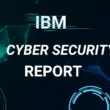
Tab Napping is a new form of phishing that is hitting the internet now. With the conventional form of phishing, for example, you might receive an email that is supposedly from your bank, and it might ask you to login and update or confirm your account details, of course, there would be a link to your banks website in the email for you to click, which would take you to a page that looks identical to your real banks login page.
How does it works?
Tab napping is more sophisticated than the phishing scams we’ve seen so far, and it no longer relies on persuading you to click on a dodgy link. Instead it targets internet users who open lots of tabs on their browser at the same time (for example, by pressing CTRL + T).
If you have multiple tabs open and you are reading the page on your current active tab, any of the other inactive browser tabs could be replaced with a fake web page that is set up to obtain your personal data, the web page will look exactly the same as the page you opened in the tab, you probably wont even know it has been replaced with a fake page. Fraudsters can actually detect when a tab has been left inactive for a while, and spy on your browser history to find out which websites you regularly visit, and therefore which pages to fake.
This may surprise you, but phishers and fraudsters in general can actually detect when a tab has been left inactive for a period of time, which means they can spy on your browsing history, this tells them which websites and web pages you visit on a regularly basis, so they’ll know which bank you use and which email account you use, whatever you view, they’ll know about it, which means they’ll know which fake pages to make to replace the real pages in your inactive tabs, you’ve now left yourself open to become a victim of tab napping.
Video Tutorial:
How can you protect yourself against tab napping?
Here are four simple ways you can prevent yourself from falling victim:
- Use Noscript extension in Browser.
- Make sure you always check the URL in the browser address page is correct before you enter any login details. A fake tabbed page will have a different URL to the website you think you’re using.
- Always check the URL has a secure https:// address even if you don’t have tabs open on the browser.
- If the URL looks suspicious in any way, close the tab and reopen it by entering the correct URL again.
- Avoid leaving tabs open which require you to type in secure login details. Don’t open any tabs while doing online banking – open new windows instead (CTRL + N).




